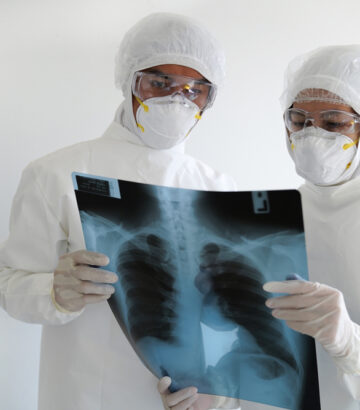WHN Response to Four CDC Questions on Preventing Transmission in Healthcare Settings
April 30, 2024
Subject: WHN Response to Four CDC Questions on Preventing Transmission of Infectious Agents in Healthcare Settings
From: Infection Prevention Team, World Health Network
To:
Daniel Jernigan, MD, MPH
Director of the National Center for Emerging and Zoonotic Infectious Diseases CDC, and
John Howard, MD, MPH, JD, LLM, MBA
Director of the National Institute for Occupational Safety and Health (NIOSH), CDC
Overview
On January 23, 2024, the CDC responded [1] to the drafted update to the “Guideline for Isolation Precautions: Preventing Transmission of Infectious Agents in Healthcare Settings” developed by the Healthcare Infection Control Practices Advisory Committee (HICPAC). The response begins with essential truths: “The COVID-19 pandemic has forever changed the approach we take in healthcare settings to protect healthcare personnel, patients, and others from transmission of respiratory infections. Experimental and observational data show that an important pathway for transmission of severe acute respiratory syndrome coronavirus 2 (SARS‑CoV‑2) is via inhalation of small particles in the air generated by infected individuals.” The CDC then poses four questions to be addressed in future deliberations of HICPAC. The Infection Prevention Team of the World Health Network (WHN) applauds many essential points developed by the CDC in its remit to HICPAC, including pointing to the harms due to Long COVID, and the established science that NIOSH-approved respirators provide levels of filtration for respiratory protection that cannot be equaled by surgical masks for the protection of healthcare personnel or patients.
While we applaud these points, WHN remains concerned that the CDC’s charge to HICPAC may not establish a framework for a comprehensive, updated review of airborne infection prevention guidance.
In the past, public health and hygiene science have developed specific, well-accepted science and epidemiology-based, universal, protective guidance to mitigate infectious spread by water, fomites, milk, and body fluids. The pandemic presents a golden opportunity to reevaluate airborne/respiratory infection control standards by applying the most recent scientific, engineering, and epidemiologic findings. This problem has lagged behind because the dynamics of airborne infectious contagion [2,3] have remained, for the most part (except for tuberculosis), subject to limited control. Guidelines that address airborne aerosol transmission and other essential qualities of COVID-19 infectious spread require a distinct, expanded, systemic approach to risk reduction—as well as technology adoption—beyond the focus on individual localized actions, such as masking. In this communication, WHN emphasizes the needed systemic changes in guidance that are highlighted in our responses to the four questions asked by the CDC as an initial demonstration of the application of this framework.
The risk of asymptomatic and pre-symptomatic transmission; the mechanism of aerosol spread; the prevalence of severe acute and long-term impacts—symptomatic Long COVID and organ damage, as described in the recent Senate HELP committee hearing—for patients, staff, and visitors [4,5,6,7]; that COVID-19 is still prevalent and the end of its pandemic impact is uncertain; and the probability of future airborne-driven pandemics all warrant the expansion of the traditional paradigm of airborne infection control and prevention. Genetic sequencing and statistical studies show hospital acquired infections account for 40-70% of infected healthcare workers and 10-40% of infected hospitalized patients, infection rates are dramatically reduced by testing on entry, and estimates of infections increase dramatically when shorter incubation periods of recent variants are properly accounted for [8,9,10,11,12,13,14,15,16]. The mortality rate of hospital-acquired COVID-19 can be over 10% [17,18,19], much higher than that of non-hospitalized individuals—manifesting the vulnerability of individuals in healthcare—and this does not include the long term impacts, including disability and deaths from long COVID. It is essential that estimates of harm should include long COVID effects and the long-term increases in health risks after each additional infection. Furthermore, vaccinations only partially reduce the risks of infection and do not reliably prevent infections [20,21,22] or Long Covid [23,24,25]. Immunity wanes [26,27,28] over time and provides decreasing protection from new variants [29,30]. Considering the CDC’s important role in society, the WHN encourages an authoritative, scientifically, and clinically assertive stance in its recommendations and use of straightforward, up-to-date language of airborne aerosol transmission in setting forth its guidance.
Infection Prevention in Healthcare and CDC Question Response
Infection control policy within health facilities has traditionally been focused on exposure to known or possibly infected patients (source control) and high-risk procedures (e.g., intubation, surgery) with expansion to clinical areas in proximity to infected patients and high-risk patients, e.g., on chemotherapy. While source control continues to be essential, the scientific lessons learned (see [31]) from the ongoing SARS-CoV-2 pandemic show that airborne infection control guidance must be broadly expanded. WHN promotes, and CDC guidance must support, an integrated respiratory infectious disease strategy based on well-established scientific insights and evidence. The new guidance must appropriately (1) recognize that while close proximity and droplet spread have historically dominated airborne prevention strategy, recent studies have shown the dominance of near-field and far-field aerosol spread for many respiratory infections, including but not exclusive to COVID-19, (2) address the spread of airborne infection by asymptomatic and pre-symptomatic people, (3) mitigate the risk to the clinically vulnerable population with increased health risks who congregate in healthcare facilities, (4) control the risk for patients, staff, and visitors in nonclinical areas of healthcare facilities and (5) recognize that there is delayed substantial post-acute morbidity.
Political considerations can sometimes conflict with public health and public trust, as manifest in recent polls [32,33] of the American public showing the loss of public trust in the CDC. However, it is possible to maintain separation between politics and health, as seen every day in the universally respected role of firefighting and medical emergency services. Further, the WHN calls upon the CDC to fulfill all points in its Pledge to the American People [34], with special emphasis on point three: “Base all public health decisions on the highest quality scientific data that is derived openly and objectively.”
In this communication, we emphasize the needed systemic changes in guidance that are highlighted in our responses to the four questions asked by the CDC as an initial demonstration of the application of this framework. A risk reduction framework must establish firm baseline guidance and then recognize that specific circumstances may not allow all measures to be applied and thus require adaptive combinations of stepped-up measures to achieve high overall levels of safety. Given the risk of asymptomatic and pre-symptomatic transmission, the mechanism of aerosol spread, the prevalence of severe acute and long-term impacts of COVID-19 infection, and the probability of future airborne-driven pandemics, the new guidance must recognize the urgency of this situation and appropriately address the systemic changes needed to mitigate the spread of COVID-19 and prevent future airborne-driven pandemics. To integrate these needed adjustments into future infection control guidance, WHN’s Infection Prevention Team recommends the following answers to the questions posed by the CDC in its response to HICPAC ‘s previously drafted guidance:
CDC Question 1: Should there be a category of Transmission-based Precautions that includes masks (instead of NIOSH Approved® N95® [or higher-level] respirators) for pathogens that spread by the air? Should N95 respirators be recommended for all pathogens that spread by the air?
WHN Infection Prevention Team Answer to Question 1:
N-95 Respirators (or better) must be considered a “standard precaution” not a “transmission-based precaution” to protect against airborne pathogens. “Standard precautions” apply to the care of all patients, regardless of suspected or confirmed infection status, in any setting in which healthcare is delivered and at all times. In contrast, a “transmission-based precaution” is one that applies to a specific patient due to infection with an identified pathogen that has transmission properties not prevented by standard precautions, or presents with a higher risk condition. A “standard precaution” guidance should be adopted because COVID-19 is present throughout the year, is highly contagious, involves asymptomatic transmission, evolves quickly to evade prior natural and vaccine-generated immunity, and because reinfections increase health risks. It should be noted that while surgical masks have been used for source control in the past, they are not designed to protect from aerosolized airborne diseases such as COVID-19. The CDC has recently affirmed this directly in its response to HICPAC’s draft guidance: “Although masks can provide some level of filtration, the level of filtration is not comparable to NIOSH-approved respirators. Respiratory protection remains an important part of personal protective equipment to keep healthcare personnel safe.”
N95 masks, and other respirators, must be standard protection for all pathogens that can spread through the air in aerosols, such as RSV, Influenza, COVID-19, tuberculosis, parainfluenza, metapneumovirus, and measles. Airborne pathogens can travel over long distances and remain infectious in the air for hours. Droplet theory—the theory that airborne diseases only travel short distances through droplets before falling to the ground—is an outmoded and inappropriate [35] way to approach infection control for airborne, aerosol-spread diseases. Any updated guidance for healthcare settings must include but not be limited to the use of respirators such as N95s as a “standard precaution” to reduce the spread of infectious pathogens in healthcare settings.
Society, healthcare institutions, and medical professionals have all accepted the universal precaution model of infection control developed for HIV prevention using “standard precautions” for PPE (barrier protection) when exposed to bodily fluids [36] to protect against HIV and other blood-borne spread pathogens. Similarly, there must be the development of airborne infection prevention protocols for COVID-19 using “standard precautions” with universal use of respirators such as N95s to protect against airborne, aerosol-spread pathogens. At the same time, the identification of an inpatient with COVID-19 means a higher risk for those in proximity to the infected individual. Therefore, additional “transmission-based precautions” should be specified for suspected or known COVID-19 patients, using infection control protocols similar to those of TB [37].
There have been dramatic improvements in comfort and breathability in respirators. The historical N-95 respirators primarily developed for industrial usage can be replaced by more breathable, more comfortable, better fitting, more effective, and more aesthetic respirators. NIOSH NPPTL is a trusted organization with extensive technical expertise in the development, testing, and evaluation of personal protective equipment (PPE) for respiratory protection. Their contribution could ensure that these respirators are efficient and reliable for use in various settings, such as healthcare, industrial, and emergency response. So, NIOSH NPPTL should be tasked with the evaluation and testing of respirators with diverse properties to meet the wider adoption and distinct uses currently necessary, including disposable, reusable elastomeric, and PAPRs. Current technologies could allow matching faces to respirators using AI facial pattern recognition to simplify identifying better starting points for good fit and comfort.
It should be noted that the CDC must affirm the need for compliance with the Americans With Disabilities Act to protect disabled high-risk people/patients when they enter healthcare facilities so that they can safely access care. In addition, any CDC guidance must be compliant with occupational health protections for all healthcare facility staff. This coordination of guidance for civil rights and occupational safety must be specific and detailed.
In short, while it is essential to prioritize source control, we strongly believe that with the lessons learned from the ongoing SARS-CoV-2 pandemic, airborne infection control guidance must be broadly expanded. An integrated respiratory infectious disease strategy, based on well-established scientific insights and evidence, must appropriately recognize the dominance of near-field and far-field aerosol spread for many respiratory infections, including but not exclusive to COVID-19. It must also address the spread of airborne infection by asymptomatic and pre-symptomatic people, mitigate the risk to the clinically vulnerable population with increased health risks who congregate in healthcare facilities, control the risk for patients, staff, and visitors in nonclinical areas of healthcare facilities, and recognize that there is delayed substantial harm from COVID-19, including long-term disability and deaths from long COVID.
CDC Question 2: Can the workgroup clarify the criteria that would be used to determine which transmission by air category applies for a pathogen? For the category of Special Air Precautions, can you clarify if this category includes only new or emerging pathogens or if this category might also include other pathogens that are more established? Can you also clarify what constitutes a severe illness?
WHN Infection Prevention Team Answer to Question 2:
As stated above, universal use of N-95 or better respirators in healthcare settings must be part of “standard precautions” year-round for COVID-19 as long as it continues to circulate. As such, it will also protect against other airborne aerosol-spread diseases, such as tuberculosis, measles, influenza, and RSV.
In addition to standard precautions, “transmission-based precautions” should be used with any known patient infected with an airborne, aerosol-spread disease. Categories for precautions should not be based on whether an infectious disease is new, emerging, or established, but on how the disease is transmitted and how severe its effects may be. For novel pathogens where transmission and severity, including long term effects, are not certain, the precautionary principle should apply, with universal standard respiratory precautions as the default until proven otherwise. When assessing the severity of diseases for transmission-based precautions, both short (acute phase) and long-term (post-acute phase) effects of infection need to be included, along with attention to increased risk to people with known medical vulnerabilities (e.g. pregnant women, those already with Long COVID or other chronic illnesses, the immunocompromised, those with autoimmune disease, and the elderly in nursing homes).
A category of transmission-based precautions for “Special Air Precautions” may serve as a means of identifying high risk or harm contexts for those in contact with known infected patients who are in isolation, i.e. synonymous with “isolation guidelines.” Such guidelines are distinct from those applied to those who are at higher risk of being infected. These “Special Air Precautions” or “Isolation guidelines” may be associated with a list of airborne infectious agents such as tuberculosis, SARS-CoV-2, measles, and others. Special Air Precautions should include requiring PPE, using single patient isolation rooms, putting a note in the chart, a sign on the door, and a respirator mask on the patient at times when exposure to others is not adequately prevented by other precautions, using special cleaning protocols, utilizing elevated levels of ventilation and air filtering, etc.
While negative air pressure isolation rooms (AIIRs) that inhibit air flow into hallways and adjacent rooms are a good source control method when Special Air Precautions are indicated, they have significant limitations including high costs and limited availability. Higher levels of adoption and risk reduction may be achieved using directed air flow methods similar to surgical smoke evacuation or extraoral suction in dentistry that are in use for close proximity, high risk conditions. More generally, higher than standard levels of air filtration, ventilation, and UV disinfection have significant potential to provide better levels of protection than AIIRs and should be more widely adopted. Because this CDC guidance may influence the standard of care worldwide for a decade, the language should allow for the inclusion of innovative devices and technologies as they become available and their efficacy established.
In addition to high risk conditions near infected patients, there are also high risk and high harm areas in healthcare settings, such as high-traffic or high-occupancy spaces, confined areas, and areas containing high acuity and highly vulnerable patients and the departments that service them. Such areas include, but are not limited to, the emergency department, waiting areas, elevators or corridors, shared restrooms, dialysis, oncology or immunology infusion areas, ambulances, and medical aircraft. These areas must employ higher levels of systemic precautions including those specified for ventilation and HEPA air filtering by ASHRAE [38] infectious disease standards (2019, Chapter 9), rather than inadequate air pollution standards, with a minimum of 12 ACH as a baseline across all healthcare facilities.
The question about disease severity was raised in the context of determining when actions should be taken by healthcare providers to prevent risk of exposure to a specific, novel disease. In public health generally, risks, benefits, and associated harms are probabilistic, uncertain, and projected into the future. This uncertainty is magnified by novel and emerging infectious diseases, and precautionary principles should be applied to all guidelines and policies. Treatments and prevention measures do not require a definition of severe disease. They require attention both to possible acute morbidities and the potential impact of disease on quality of life, including short term and long term impacts on both individuals and society at large. Any criterion based only on severity of disease may not fully encompass the role of prevention. In fact, the US has a large program [39,40] to prevent Healthcare Associated Infections (HAI) precisely because of their profound and far-reaching impact. The CDC’s ongoing responsibilities include both emergent and HAI infection prevention [41] and COVID HAI infections should be incorporated in these HAI programs as a high priority for prevention.
Although not fully understood, the long term health [4,5,6] and economic [42,43,44] consequences of COVID infection have already been well established. While the CDC is focused on the health impacts, it is imperative that the quantitative economic impacts are recognized as well. Despite gaps in our knowledge, important conclusions can be made. According to economist David Cutler [44], the level of long COVID impacts is 3.7 trillion dollars, and uncertainty does not change the scale of this estimate. He states: “With costs this high, virtually any amount spent on Long COVID detection, treatment, and control would result in benefits far above what it costs.” While political and commercial interests consider prevention to be both a financial and a convenience cost, it is apparent that there is no rational tradeoff for COVID infections: prevention and economic benefits are both aligned and substantial. The focus, therefore, must be on effective measures of risk reduction. This is the domain that the CDC is charged to perform by Congress.
CDC Question 3: Is the current guideline language sufficient to allow for voluntary use of a NIOSH Approved N95 (or higher-level) respirator? Should the document include a recommendation about healthcare organizations allowing voluntary use?
WHN Infection Prevention Team Answer to Question 3:
Healthcare personnel should wear, at minimum, disposable, fit-tested NIOSH-approved N95 respirators with voluntary use of higher levels of respiratory protection such as elastomeric masks or PAPRs with source control. Patients and visitors should wear NIOSH-approved N95s where possible, without requiring fit testing. All respirators or other forms of respiratory protection worn by patients and visitors should also have source control. Within a healthcare facility, N95’s are the mainstay of source control and therefore, should not include valved N95’s that only provide one-way protection. Alternative standards (including KF94, KN95, FFP2) may be used if adequate self-fit tests are observed, especially for children and small adults where NIOSH standards are not established (the establishment of such standards should be a priority). If the patient or visitor wants to voluntarily wear elastomeric respirators or PAPRs and with equal or higher level of filtration, that should be allowed. Counter to policies in some healthcare settings, patients, staff and visitors should not be required to layer a hospital-provided surgical mask over their respirators as this is both unnecessary and may weaken the integrity of the respirator seal [45]. Hospital greeters should be trained accordingly. Healthcare facilities must provide known infected patients with other forms of protection, such as assigning a private room or cohorting with other patients with the same infection in a separate region of the facility, limiting mobility, increasing physical distance from others, and enhanced room ventilation and filtration (“Special Air Precautions” or “Isolation Guidelines”).
If a person is unable to wear a respirator due to medical conditions, age, emotional distress, or disability, they should be allowed to use the highest level of protection they can tolerate on a voluntary basis. For instance, if they are in a medical situation where their mouth is being worked on and a mask cannot be worn normally, they should be permitted to voluntarily use a modified N95 mask to cover their nose. If they cannot wear a respirator for a procedure, or if they request this for any reason, they should be permitted to bring a personal HEPA air purifier and aim it toward their face for directional airflow of filtered air. If they have a disability that prevents a respirator from being worn, they should be offered a surgical mask to use if it can be tolerated or put in a private room and isolated from others. Consistent with a systemic risk reduction approach, where a patient is unable to wear standard respiratory protection, the risk to healthcare workers and other patients is elevated. Therefore, higher levels of protection such as elastomeric masks or PAPRs with source control, directed air flows, and additional testing may be indicated. In these cases, infection risk management should be elevated to transmission-based precautions as part of the overarching, risk-limiting based guidance.
In situations where the patient is not wearing a respirator, the necessity for this should be documented in the medical record by the attending provider. There should be an affirmative policy guidance that patients who refuse a respirator should sign an “Against Medical Advice” (AMA) release. Visitors who refuse to mask should sign a formal release of liability statement and, depending on the circumstances, the policy may include refusal of entry if risks to other patients or healthcare personnel cannot otherwise be limited. Isolation or other elevated precautions should be used to limit exposure risk for others when a potentially infected individual is not wearing a respirator.
CDC Question 4: Should there be a recommendation for use of source control in healthcare settings that is broader than current draft recommendations? Should source control be recommended at all times in healthcare facilities?
WHN Infection Prevention Team Answer to Question 4:
As mentioned in our answer to Question #1, WHN considers universal use of respiratory protection that provides for both source and infection control as essential for “Standard Precautions”— hence source control should always be implemented during infectious spread. Source control must also be applied as part of “Isolation guidance” and “Special Air Protections” as appropriate for suspected or known COVID-19 patients, measles, tuberculosis, and other significant aerosol-spread diseases. As indicated previously, “Isolation Guidance” and “Special Air Protections” should include requiring PPE, using single patient isolation rooms, putting a note in the chart, a sign on the door, respirator masks on patients at times when exposure to others is not adequately prevented by other precautions, special cleaning protocols, elevated levels of ventilation and air filtering, etc.
Due to the possibility and likelihood of presymptomatic and asymptomatic spread, it is essential to consider undifferentiated individuals, including visitors and HCWs as potentially infectious until further stratified. According to a 2023 study [46], transmission can happen in as little time as 20 seconds to 4 minutes [47] (depending on whether the source is a high shedder or average shedder), and high levels of infectious virus were detected in exhaled breath regardless of vaccination status, with significant amounts emitted even in mild and asymptomatic cases. A quantitative aerosol study also showed transmission can happen in as little as a few minutes [48] in normal indoor environments. Due to asymptomatic transmission, every person must be considered potentially infectious upon entrance to the healthcare facility. Universal PCR or LAMP testing upon entrance to the hospital should be used as a form of source control [8,11] to reduce the risk and improve the safety of healthcare personnel, patients, and visitors in the healthcare facility. Universal testing on entry faces challenges in emergency cases and for protocols at the entryway. These challenges may lead to specific individuals not being tested before other procedures and interactions happen. Well thought through protocols along with elevating levels of other precautions should be used to reduce risks under these conditions. The limits of testing accuracy (with the attendant inability to rule out certain infections with a negative test) constrain this risk reduction strategy, but it serves as one of the key prevention measures. The risk of individuals being infectious after a negative test result is significantly lower than that before testing. Extended incubation periods mean that surveillance testing should also be part of the ongoing risk reduction methods that are regularly re-applied in a healthcare setting, with daily testing being an outstanding method for inpatient risk reduction.
______
In summary, we are sending these responses to the CDC and HICPAC for consideration when drafting their updated airborne Infection Control Guidelines. The WHN encourages the CDC to take an authoritative, scientifically and clinically assertive stance in developing its recommendations. WHN asserts that ethical medical responsibility does not permit any, willing or unwilling, occupant in a healthcare facility to be exposed to potentially dangerous conditions when there are known, widely available, effective mitigation strategies. To integrate these much-needed adjustments into future airborne infection control guidance, the WHN recommends the use of N95 respirators (or better) as a “standard precaution” to protect against airborne pathogens. The undifferentiated patient must be considered infectious until further stratified, and universal PCR or LAMP testing is recommended upon entrance to the hospital to minimize the spread of infections. Surveillance testing with high-quality (PCR or LAMP) testing is also recommended to limit risks within the facility due to extended incubation periods. Furthermore, the universal use of systemic risk reduction strategies including air filtration, ventilation, and disinfection technologies [49], isolation, quarantine, distancing, and vaccination in healthcare facilities must be addressed at the same time as individual respirator use to create comprehensive, functional, integrated airborne infection control guidance.
Due to the need to include technologies that expand the current standards and practices, we commend the acknowledgment by the CDC that HICPAC membership be expanded to include a range of technical backgrounds. Experts in airborne transmission and ventilation, industrial hygiene, UV and HEPA filtration, ventilation engineering, respiratory protection and occupational health and safety are essential. Input is also necessary from professionals in ADA rights and accessibility, patients and community members, as well as input from frontline health care workers and labor unions representing health care workers, particularly regarding workers’ rights and safety, to gain a better perspective on the issues facing patients and workers in relation to infection control.
In conclusion, WHN specifies why the CDC must take an enhanced systemic perspective to reduce the risk of COVID-19 transmission in healthcare settings. By adopting an integrated airborne infectious disease strategy and implementing necessary measures such as standard precautions recognizing the significance of aerosol transmission (including mandating respirators, up-to-date ventilation and filtration standards, universal surveillance testing, appropriate isolation, quarantine, and distancing), the CDC will protect the safety of healthcare workers, patients, and visitors.
Given the unequivocal risk of asymptomatic and pre-symptomatic transmission, the highly contagious nature of COVID-19 aerosol spread, the widespread, devastating acute and long-term effects of COVID-19 infection, and the looming threat of future airborne-driven pandemics, the CDC must take an authoritative, scientifically and clinically assertive stance in its recommendations. The new guidance must use straightforward, unambiguous language on airborne aerosol transmission to provide clear and explicit guidance. New guidance must recognize the urgency of this situation and quickly address the systemic changes required to mitigate the spread of COVID-19 and other airborne diseases and to prevent future airborne-driven pandemics.
Historically, guidance provided by the CDC has had great impact across healthcare institutions, both nationally and internationally, as a highly protective, scientifically-based standard to follow. When asked by many patients about their need to follow precautions, institutions often point to the CDC’s guidelines to justify the measures they adopt. Should the CDC not adopt high levels of protection in its guidance, it should make clear that its guidance is designed to be a minimum standard that provides only limited risk reduction and can be exceeded by healthcare institutions that decide to better protect their healthcare personnel, patients, and visitors. This situation has already arisen in some healthcare institutions in the USA that have adopted universal precautions, including N95 masking, in response to their direct experience, finding that the CDC guidance was not adequate to prevent outbreaks. Going forward, however, WHN strongly recommends the CDC provide effective guidance, not an inadequate standard, for healthcare safety.
References
[1] A CDC Update on the Part One Draft update to the Guideline for Isolation Precautions: Preventing Transmission of Infectious Agents in Healthcare Settings | Blogs | CDC [Internet]. 2024 [cited 2024 Mar 28]. Available from: https://blogs.cdc.gov/safehealthcare/draft-2024-guideline-to-prevent-transmission-of-pathogens-in-healthcare-settings/
[2] Wang CC, Prather KA, Sznitman J, Jimenez JL, et al. Airborne transmission of respiratory viruses. Science. 2021 Aug 27;373(6558):eabd9149. https://doi.org/10.1126/science.abd9149
[3] Exhibit 1, HHS Complaint on HICPAC: ANALYSIS AND EVIDENCE SUPPORTING A COMPLAINT OF GROSS MISCONDUCT October 29, 2023, World Health Network, https://whn.global/hhs-complaint-on-hicpac/
[4] Phillips S, Williams MA. Confronting Our Next National Health Disaster — Long-Haul Covid. N Engl J Med. 2021 Aug 11;385(7):577–9. https://www.nejm.org/doi/full/10.1056/NEJMp2109285
[5] Ewing A, Šalamon, Š, Pretorius, R, Joffe, D, Fox, G, Bilodeau, S., et al. Spectrum of COVID-19: From Asymptomatic Organ Damage to Long COVID Syndrome. WHN Science Commun. 2024 Mar 15;5(3):1–1. https://whn.global/scientific/spectrum-of-covid-19-from-asymptomatic-organ-damage-to-long-covid-syndrome/
[6] Addressing Long COVID: Advancing Research and Improving Patient Care | The U.S. Senate Committee on Health, Education, Labor & Pensions [Internet]. [cited 2024 Mar 28]. Available from: https://www.help.senate.gov/hearings/addressing-long-covid-advancing-research-and-improving-patient-care
[7] Over-exposed and under-protected: the long-term impact of COVID-19 on doctors, British Medical Association, https://www.bma.org.uk/bma-media-centre/first-major-survey-of-doctors-with-long-covid-reveals-debilitating-impact-on-health-life-and-work-and-wider-implications-for-workforce-and-health-services
[8] Evans, S., Agnew, E., Vynnycky, E., Stimson, J., Bhattacharya, A., Rooney, C., et al. (2021). The impact of testing and infection prevention and control strategies on within-hospital transmission dynamics of COVID-19 in English hospitals. Philos. Trans. R. Soc. B 376 (1829):20200268. http://doi.org/10.1098/RSTB.2020.0268
[9] Cook, KF., Beckett, A. H., Glaysher, S., Goudarzi, S., Fearn, C., Loveson, K. F., et al. Multiple pathways of SARS-CoV-2 nosocomial transmission uncovered by integrated genomic and epidemiological analyses during the second wave of the COVID-19 pandemic in the UK. Frontiers in cellular and infection microbiology 12 (2023): 1066390. https://doi.org/10.3389/fcimb.2022.1066390
[10] Wolfensberger, A., Kufner, V., Zaheri, M., Zeeb, M., Nortes, I., Schreiber, P. W et al (2022). Nosocomial COVID-19 Incidence and Secondary Attack Rates among Patients of Tertiary Care Center, Zurich, Switzerland. Emerging Infectious Diseases, 28(10), 2087-2090. https://doi.org/10.3201/eid2810.220321.
[11] Hatfield KM, Baggs J, Maillis A, et al. Assessment of hospital-onset SARS-CoV-2 infection rates and testing practices in the US, 2020-2022. JAMA Netw Open. 2023;6(8):e2329441. https://doi.org/10.1001/jamanetworkopen.2023.29441
[12] Yap JF, Ng RJ, Chin SM, Mohammed Abu Bakar R, Nik Jaafar NZ, Mohamad Razali SZ, Ahmad SN, Ng CW, Ahmad Zaki R, Syed Omar SF, Kamarulzaman A, Hasnan N, Ponnampalavanar SSS, Cheng Lim Y, Hoe VCW. Factors Associated With Nosocomial COVID-19 Infection Among Health Care Workers in an Urban-Setting Malaysia Hospital. Asia Pac J Public Health. 2023 Mar;35(2-3):162-167. http://doi.org/10.1177/10105395231159262
[13] Cooper, B.S., Evans, S., Jafari, Y. et al. The burden and dynamics of hospital-acquired SARS-CoV-2 in England. Nature 623, 132–138 (2023). https://doi.org/10.1038/s41586-023-06634-z
[14] Abbas, M., Robalo Nunes, T., Martischang, R. et al. Nosocomial transmission and outbreaks of coronavirus disease 2019: the need to protect both patients and healthcare workers. Antimicrob Resist Infect Control 10, 7 (2021). https://doi.org/10.1186/s13756-020-00875-7
[15] Huff, HV., Singh, A. (2020). Asymptomatic transmission during the coronavirus disease 2019 pandemic and implications for public health strategies. Clin. Infect. Dis. 71, 2752–2756. http://doi.org/10.1093/CID/CIAA654
[16] Harding and Campbell, Up to 20% of Hospital Patients with Covid-19 Caught It at Hospital. NHS England figures reveal some infections were passed on by hospital staff unaware they had virus, 17 May 2020, https://www.theguardian.com/world/2020/may/17/hospital-patients-england-coronavirus-covid-19
[17] Too many patients are catching COVID in Australian hospitals, doctors say. So why are hospitals rolling back precautions? https://www.abc.net.au/news/2024-02-11/patients-catching-covid-hospitals-australia-infection-control/103442806
[18] Disease severity by admission and acquisition status 2022, Victoria, Australia, https://twitter.com/YouAreLobbyLud/status/1640353568627601408/photo/1
[19] Revealed: One Queenslander a day dying with Covid in hospital – Worried doctors and a Right to Information request have revealed one Queenslander a day is dying after contracting Covid in hospital. https://www.couriermail.com.au/news/queensland/revealed-one-queenslander-a-day-dying-with-covid-in-hospital/news-story/dbcb1c5a0581c8d2abaacce0c66785ef
[20] Meggiolaro A, Sane Schepisi M, Farina S, Castagna C, Mammone A, Siddu A, Stefanelli P, Boccia S, Rezza G. Effectiveness of vaccination against SARS-CoV-2 Omicron variant infection, symptomatic disease, and hospitalization: a systematic review and meta-analysis. Expert Rev Vaccines. 2022 Dec;21(12):1831-1841. https://doi.org/10.1080/14760584.2022.2130773
[21] Tseng, H.F., Ackerson, B.K., Luo, Y. et al. Effectiveness of mRNA-1273 against SARS-CoV-2 Omicron and Delta variants. Nat Med 28, 1063–1071 (2022). https://doi.org/10.1038/s41591-022-01753-y
[22] Link-Gelles R, Ciesla AA, Mak J, et al. Early Estimates of Updated 2023–2024 (Monovalent XBB.1.5) COVID-19 Vaccine Effectiveness Against Symptomatic SARS-CoV-2 Infection Attributable to Co-Circulating Omicron Variants Among Immunocompetent Adults — Increasing Community Access to Testing Program, United States, September 2023–January 2024. MMWR Morb Mortal Wkly Rep 2024;73:77–83. http://dx.doi.org/10.15585/mmwr.mm7304a2.
[23] Taquet M, Dercon Q, Harrison PJ. Six-month sequelae of post-vaccination SARS-CoV-2 infection: A retrospective cohort study of 10,024 breakthrough infections. Brain Behav Immun. 2022 Jul;103:154-162. https://doi.org/10.1016/j.bbi.2022.04.013
[24] Al-Aly, Z., Bowe, B. & Xie, Y. Long COVID after breakthrough SARS-CoV-2 infection. Nat Med 28, 1461–1467 (2022). https://doi.org/10.1038/s41591-022-01840-0
[25] Català M, Mercadé-Besora N, Kolde R, Trinh NTH, Roel E, et al. The effectiveness of COVID-19 vaccines to prevent long COVID symptoms: staggered cohort study of data from the UK, Spain, and Estonia. Lancet Respir Med. 2024 Mar;12(3):225-236. https://doi.org/10.1016/S2213-2600(23)00414-9
[26] Jacobsen, H., Sitaras, I., Katzmarzyk, M. et al. Systematic review and meta-analysis of the factors affecting waning of post-vaccination neutralizing antibody responses against SARS-CoV-2. npj Vaccines 8, 159 (2023). https://doi.org/10.1038/s41541-023-00756-1
[27] Wei, J., Stoesser, N., Matthews, P.C. et al. Risk of SARS-CoV-2 reinfection during multiple Omicron variant waves in the UK general population. Nat Commun 15, 1008 (2024). https://doi.org/10.1038/s41467-024-44973-1
[28] Menegale F, Manica M, Zardini A, Guzzetta G, Marziano V, d’Andrea V, Trentini F, Ajelli M, Poletti P, Merler S. Evaluation of Waning of SARS-CoV-2 Vaccine-Induced Immunity: A Systematic Review and Meta-analysis. JAMA Netw Open. 2023 May 1;6(5):e2310650. http://doi.org/10.1001/jamanetworkopen.2023.10650
[29] Cao, Y., Yisimayi, A., Jian, F. et al. BA.2.12.1, BA.4 and BA.5 escape antibodies elicited by Omicron infection. Nature 608, 593–602 (2022). https://doi.org/10.1038/s41586-022-04980-y
[30] Liu, C., Das, R., Dijokaite-Guraliuc, A. et al. Emerging variants develop total escape from potent monoclonal antibodies induced by BA.4/5 infection. Nat Commun 15, 3284 (2024). https://doi.org/10.1038/s41467-024-47393-3
[31] Šalamon, Š., Ewing, A., Fox, G., Bilodeau, S., Gershenson, C., Heino, M. T., & Bar-Yam, Y., (2024). SARS-CoV-2 and COVID-19: From Crisis to Solution. WHN Science Communications, 5(1), 1-1. https://doi.org/10.59454/whn-2401-334
[32] TIN, Alexander. “A Quarter of Americans Distrust CDC Recommendations, Survey Finds”, March 7, 2023, CBS News https://www.cbsnews.com/news/cdc-recommendations-survey-trust/ (consulted on April 1, 2024)
[33] SteelFisher GK, Findling MG, Caporello HL, Lubell KM, Vidoloff Melville KG, Lane L, et al. Trust In US Federal, State, And Local Public Health Agencies During COVID-19: Responses And Policy Implications. Health Aff (Millwood). 2023 Mar;42(3):328–37. https://www.healthaffairs.org/doi/epdf/10.1377/hlthaff.2022.01204
[34] CDC. Centers for Disease Control and Prevention. 2018 [cited 2024 Mar 28]. Pledge to the American People. Available from: https://www.cdc.gov/about/organization/pledge.html
[35] Morawska L, Bahnfleth W, Bluyssen PM, Boerstra A, Buonanno G, Dancer SJ, Floto A, Franchimon F, Haworth C, Hogeling J, Isaxon C, Jimenez JL, Kurnitski J, Li Y, Loomans M, Marks G, Marr LC, Mazzarella L, Melikov AK, Miller S, Milton DK, Nazaroff W, Nielsen PV, Noakes C, Peccia J, Querol X, Sekhar C, Seppänen O, Tanabe SI, Tellier R, Wai TK, Wargocki P, Wierzbicka A. Coronavirus Disease 2019 and Airborne Transmission: Science Rejected, Lives Lost. Can Society Do Better? Clin Infect Dis. 2023 May 24;76(10):1854-1859. https://doi.org/10.1093/cid/ciad068
[36] Isolation Precautions | Guidelines Library | Infection Control | CDC [Internet]. 2023 [cited 2024 Mar 28]. Available from: https://www.cdc.gov/infectioncontrol/guidelines/isolation/index.html
[37] Transmission-Based Precautions | Basics | Infection Control | CDC” [Internet]. 2020 [cited 2024 Mar 28]. Available from: https://www.cdc.gov/infectioncontrol/basics/transmission-based-precautions.html
[38] ASHRAE Handbook Content [Internet]. [cited 2024 Mar 28]. Available from: https://www.ashrae.org/technical-resources/ashrae-handbook-content
[39] CMS, Hospital-Acquired Condition Reduction Program, [cited 2024 April 10] https://www.cms.gov/medicare/quality/value-based-programs/hospital-acquired-conditions
[40] AHRQ’s Healthcare-Associated Infections Program [Internet]. [cited 2024 Mar 28]. Available from: https://www.cdc.gov/hai/index.html
[41] FY 2024 | Congressional Justifications | Budget | CDC [Internet]. 2023 [cited 2024 Mar 28]. Available from: https://www.cdc.gov/budget/fy2024/congressional-justification.html
[42] UK Treasury Committee, Oral evidence: Bank of England Monetary Policy Reports, HC 143, Monday 16 May 2022, https://committees.parliament.uk/oralevidence/10215/html/. See https://x.com/yaneerbaryam/status/1527058830420484098
[43] Bach, K. “New data shows long Covid is keeping as many as 4 million people out of work.” Brookings (2022). https://www.brookings.edu/articles/new-data-shows-long-covid-is-keeping-as-many-as-4-million-people-out-of-work/
[44] The Economic Cost of Long COVID: An Update – David Cutler,. 2024 [cited 2024 Mar 28]. Available from: https://www.hks.harvard.edu/centers/mrcbg/programs/growthpolicy/economic-cost-long-covid-update-david-cutler
[45] Mueller JT, Geyer HD, Karimi S, Poterack KA, Seville MTA, Petty SB, et al. Two masks can be worse than one: N95 respirator failure caused by an overlying face mask. Infect Control Hosp Epidemiol. 2023 Sep;44(9):1529–31. https://doi.org/10.1017/ice.2022.277
[46] Lane G, Zhou G, Hultquist JF, Simons LM, Redondo RL, Ozer EA, et al. Quantity of SARS-CoV-2 RNA copies exhaled per minute during natural breathing over the course of COVID-19 infection [Internet]. medRxiv; 2023 [cited 2024 Mar 28]. p. 2023.09.06.23295138. Available from: https://www.medrxiv.org/content/10.1101/2023.09.06.23295138v1
[47] Iqbal SS, Here’s how much coronavirus people infected with COVID-19 may exhale (2023), Science News, https://www.sciencenews.org/article/coronavirus-infected-covid-19-exhale
[48] Alsved M, Nyström K, Thuresson S, Nygren D, Patzi-Churqui M, Hussein T, et al. Infectivity of exhaled SARS-CoV-2 aerosols is sufficient to transmit covid-19 within minutes. Sci Rep. 2023 Dec 1;13(1):21245. https://www.nature.com/articles/s41598-023-47829-8
[49] Nourozi B, Wierzbicka A, Yao R, Sadrizadeh S. A systematic review of ventilation solutions for hospital wards: Addressing cross-infection and patient safety. Build Environ. 2024 Jan 1;247:110954. https://doi.org/10.1016/j.buildenv.2023.110954
Sincerely,
Infection Prevention Team, World Health Network
CC:
The Honorable Xavier Becerra, Secretary
U.S. Department of Health and Human Services
Mandy K. Cohen, MD. MPH, Director
Centers for Disease Control and Prevention











